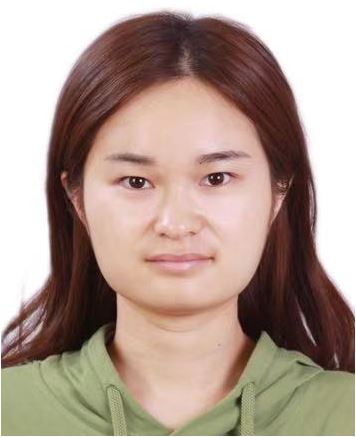Higher order time-implicit bounds preserving discontinuous galerkin discretizations for partial equations
Fengna Yan is a PhD student in the department Mathematics of Computational Science. Supervisors are prof.dr.ir. J.J.W. van der Vegt from the faculty of Electrical Engineering, Mathematics and Computer Science and prof.dr. Y. Xu from the University of Science and Technology China.
 This dissertation discusses higher order accurate time-implicit Discontinuous Galerkin (DG) discretizations for several classes of nonlinear Partial Differential Equations (PDEs). The two main topics considered are bounds preserving limiters combined with Diagonally Implicit Runge-Kutta (DIRK) methods, and novel efficient higher order accurate semi-implicit Spectral Deferred Correction (SDC) DG discretizations, including error estimates.
This dissertation discusses higher order accurate time-implicit Discontinuous Galerkin (DG) discretizations for several classes of nonlinear Partial Differential Equations (PDEs). The two main topics considered are bounds preserving limiters combined with Diagonally Implicit Runge-Kutta (DIRK) methods, and novel efficient higher order accurate semi-implicit Spectral Deferred Correction (SDC) DG discretizations, including error estimates.
In Chapter 2, positivity constraints are imposed on time-implicit Local Discontinuous Galerkin (LDG) discretizations of degenerate parabolic equations using Lagrange multipliers. In addition, mass conservation of the positivity limited solution is ensured by imposing a mass conservation equality constraint. This results in a mixed complementarity problem, which is expressed by the Karush-Kuhn-Tucker (KKT) equations. This approach results in a direct coupling of the bounds constraints and the DG discretization and is well suited for time-implicit discretizations. We call this approach to enforce bounds constraints “KKT-limiter”, which differs significantly from frequently used limiters in combination with explicit time integration methods that generally suffer from serious time step constraints for parabolic or stiff hyperbolic PDEs. The KKT-DIRK-LDG discretizations preserve higher order accuracy, and allow for a significantly larger time step than the time-explicit bounds preserving DG discretizations. We prove entropy stability, both for the unlimited DIRK-LDG discretization and the KKT-DIRK-LDG discretization, and unique solvability of the KKT-DIRK-LDG discretizations. Finally, numerical results are shown which illustrate the higher order accuracy and entropy dissipation of the positivity preserving KKT-DIRK-LDG discretizations.
In Chapter 3, we develop higher order accurate bounds preserving time-implicit DG discretizations for the chemically reactive Euler equations. These equations are used to describe inviscid, compressible chemically reacting flows, including detonations. Since in chemically reactive flows, the time step can be significantly limited by the large difference between the fluid dynamics time scales and the reaction time scales, we use a fractional step method, which separates the convection and reaction steps, and combine this with higher order accurate DIRK methods for the time discretization. In order to ensure that the density and pressure are nonnegative, and mass fractions are in the range between zero and one, the KKT limiter is adopted to construct bounds preserving DIRK-DG discretizations for the reactive Euler equations. In order to deal with the stiff source terms in chemically reactive flows, we use Harten’s subcell resolution technique in the reaction step. This ensures proper wave speeds in the reaction zone and improves stability. Numerical examples demonstrate that the KKT-DIRK-DG discretization results in the correct wave speed, preserves the physical bounds on the solution, and compares well with exact solutions and accurate reference solutions obtained with explicit bounds preserving discretizations for the chemically reactive Euler equations. Without the KKT limiter, most computations break down due to unphysical solutions.
In Chapter 4, we prove stability and error estimates for second and third order accurate semi-implicit SDC-LDG discretizations of the Allen-Cahn equation. For the numerical discretization of this parabolic equation, implicit time integration methods, which alleviate the time-step restrictions, result in a nonlinear system of equations that must be solved each time step. We first prove the unique solvability of the implicit SDC-LDG discretizations through a standard fixed point argument in finite dimensional space. Next, by a careful selection of the test functions, stability and error estimates for second and third order accurate time-implicit SDC-LDG discretizations are obtained in the sense that the time step only requires a positive upper bound and is independent of the mesh size. Also, numerical examples are presented that illustrate the theoretical results.



